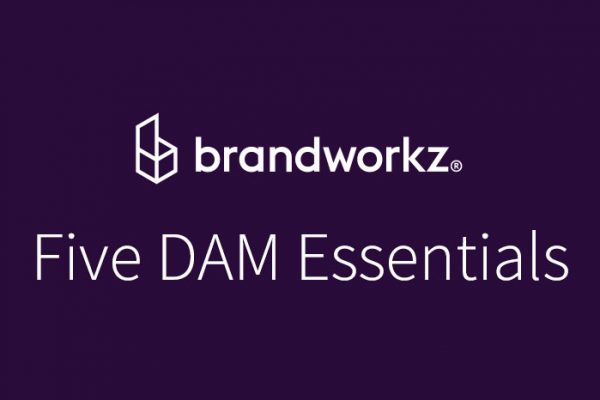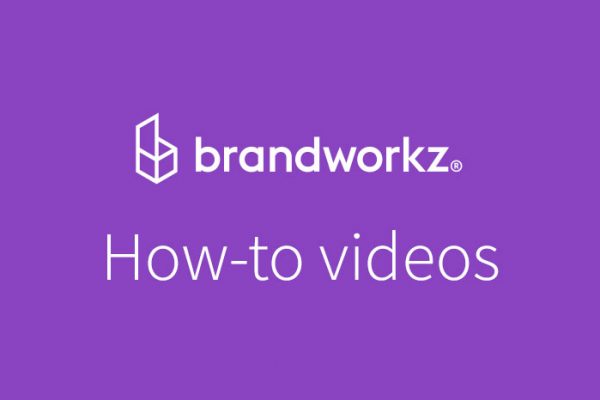Digital Asset Management (DAM) is considered essential to how brands store, access, control and share their logos, graphics, documents, videos and more. There is no doubt about the value of a good DAM. However, is it enough?
How your organisation engages with information obviously has a tremendous impact on how you’re able to operate. You not only need to think about how existing assets are accessed and used, but how new assets are created and old assets kept up to date. Digital marketing is an increasingly large part of brand management. Along with that comes new opportunities to personalise creatives, build campaigns, and communicate your brand identity across a wider range of channels.
If you want to retain brand consistency while still creatively and flexibly engaging with all of the options at your disposal, you need to think long and hard about the best way to manage your digital assets. Although that certainly will include a DAM, it might also mean adding templates, automations, approval workflow and annotation capabilities, and much, much more. Here, we’re going to explore the major challenges that traditional digital asset management software struggles to overcome when it comes to brand management, and look at integrated solutions that can take you to the next level. Let’s get started.

Digital asset management challenges that need to be overcome
Managing and maintaining digital assets is directly linked to three of the biggest challenges faced by brand managers. Traditional DAM directly addresses one of them, partially addresses the second, and broadly ignores the third. However, not every DAM is the same, and it’s worth looking at each of these challenges in more detail so that you know what a quality DAM can do, and what it probably can’t.
Challenge 1: Limited access
Access is everything when it comes to handling digital files — and it goes far beyond providing staff with a valid username and password. Improving access to assets is the central function that traditional DAM was built to solve. A cloud-based DAM will enable users to:
- Find files easily: You won’t always know the name of the file you need. Features like automated previews and a well thought out metadata structure make locating assets quick and painless.
- Work from anywhere: Every file on any device. No more departmental requests. When accessing assets via the cloud, you can simply log in and go.
- Work faster: Remove extraneous steps by allowing coworkers to engage with assets in the software they use to produce deliverables. These advanced integrations are critical to watch out for in a quality DAM platform.
- Control permissions: Ensure only the right people can view and amend files. This adds an extra layer of protection and prevents colleagues from drowning in choice.
That’s access. What’s more, our research suggests getting it right can save an organisation 724 hours per annum. That’s an entire month.
Challenge 2: Complicated approvals
Getting approval can be complex — and we’re not referring to your relationship with your parents. We’re talking about the sheer volume of departments, from marketing teams to legal, that must sign-off before a creative can see the light of day.
Some DAM solutions have integrated approval capabilities that allow users to track approval status, request reviews or edits, provide annotations and schedule reminders. However, not all do, and some don’t even consider this to be within the scope of what DAM should do.
Fundamentally, having your approval process sit outside of your DAM can work, but it’s inefficient. It will require bouncing back and forth between your approval solution (be that dedicated software or a spreadsheet) and your DAM — where your assets actually live. Specifically, when faced with a large volume of approvals — which, let’s face it, is common — a lack of integration will slow you down and potentially let inconsistencies slip through.
Challenge 3: Unnecessary blockages
Our research shows that companies dedicate 6,017 hours each year to creating new assets. That’s around eight months. However, it doesn’t have to be this way.
For example, using integrated and customisable templates, amendments to creative files can be made DIRECTLY within a single system. This means virtually anyone can create channel- and/or campaign-specific assets on-demand — and all without impacting on design decisions that have already been signed-off.
When talking about customisable templates, however, we have now strayed well away from what most DAM solutions are designed to deliver. What is not beyond a DAM is an integration to the creative software that designers use in their day-to-day jobs. With that said, making this work either requires integrating multiple types of software, or rethinking how DAM fits within your brand asset management strategy.
👉 Learn how to effectively manage your brand assets for your business with our Brand Consistency Toolkit 👈
Going beyond DAM with brand management software
DAM can do a lot, but traditional DAM doesn’t provide complete coverage for your brand management needs. Workflow approvals, templates, wider integrations and more either aren’t DAM features, or are only included within some DAM solutions.
As we’ve suggested, the first thing to understand when embarking on an overhaul of your asset management is that not all DAM systems are created equal. In fact, they can differ at a fundamental level. For example, it’s highly likely that your days involve handling images, videos, text and more. That means you could realistically be required to engage with digital assets that range from MOVs to SVGs. You’d be forgiven for expecting this to be possible in every DAM system. It isn’t.
Suggested reading: Keen to learn more about critical file format compatibility? Take a look at our recent post — Which file formats should your DAM system support?
Of course, brand management is a lot more than just storing and retrieving every type of file under the sun. This is where brand management software (BMS) comes into play. Basically defined, BMS is a DAM that integrates additional brand management capabilities that go beyond the storing and accessing of assets. It’s far more about doing things with those assets in the real world, e.g. using templates to create final artwork, integrating with creative software and more. Fundamentally, BMS is about solving the three challenges outlined in the previous section, rather than only partially addressing the needs of brand managers.
However, naming conventions aren’t really what’s important here. What you need to focus on is what your BMS, DAM or BAM (yes, there is also Brand Asset Management… which is basically the same thing) allows you to do.
Additional things your BMS should help you do include —
- Ensure the RIGHT logo is always used in the CORRECT context (first-rate BMS will allow a novice to identify which one that is in seconds using Logo Finder capabilities).
- Know when an asset is close to expiry before that becomes an issue — a feature any good DAM should provide.
- Showcase the brand at a moment’s notice, which massively helps bring onboard new people or provide examples to management.
- Deliver consistency without compromise — brand consistency has been shown to increase revenue by 23%.1
The outcome of all of this is that your processes are streamlined and inaccuracies reduced. That means that energy can be focused where it’s really needed, while still creating brand consistency across channels — seriously, what could be better!?
Building an integrated brand management solution
As we’ve said, the acronyms don’t really matter. What’s really more important than anything is just that your whole system works well together, and integrates with the tools used across your business — no matter what marketing tools you use.
Most organisations have a creeping sprawl of software licences. Updating how your approach asset management provides an opportunity to assess just how much of what you use is essential. However, it’s not always wise to seek a solution that promises to reduce the number of tools in your marketing stack. A set-up that enhances your relationship with the tools you NEED and gets them to play nicely with one another will almost always be of greater benefit.
We are not here to make the point that brand management software is the only way to succeed. Every company’s objectives, budgets and processes are different. What we are saying, however, is that nailing configuration can turn asset management from an operational endeavour into something strategic.
Suggested reading: For more details on how to manage an ever sprawling toolset, check out our recent post — Is Your Marketing Stack Getting Out of Control?
Brandworkz can help
The way your organisation handles creative files can dictate how efficient it is and, as a result, how profitable it can be. Overhauling your systems is no small task but it is entirely achievable.
Making these enhancements is what we do best and we’d love to talk to you about your ambitions. Brandworkz is fully customisable, integrated and configurable brand management software built to deliver a sophisticated digital asset management system. So, if you’re keen to know more, contact us for a no-obligation demo of our award-winning software today.
110 Marketing, Web Design & Branding Statistics To Help You Prioritize Business Growth Initiatives




